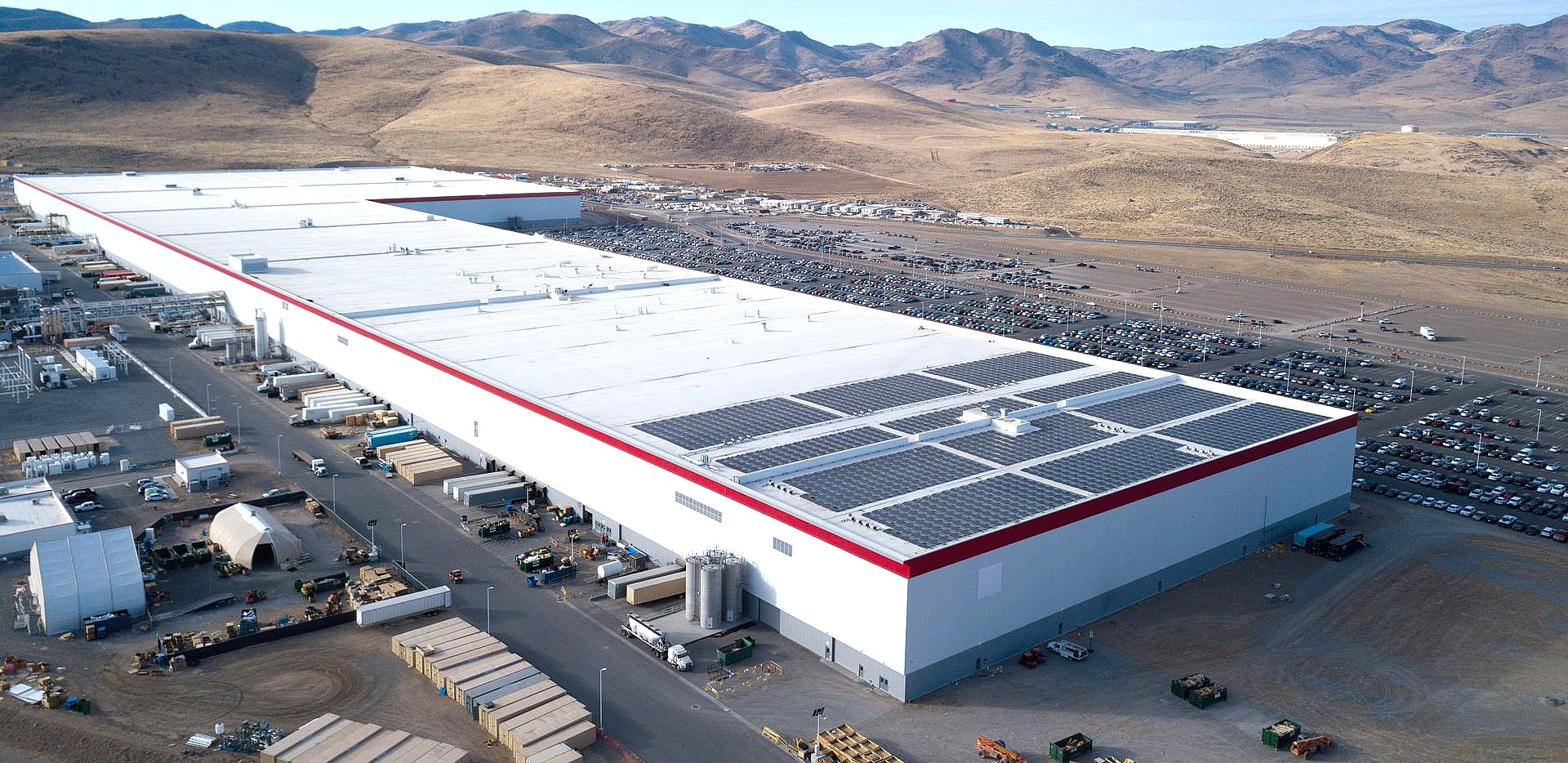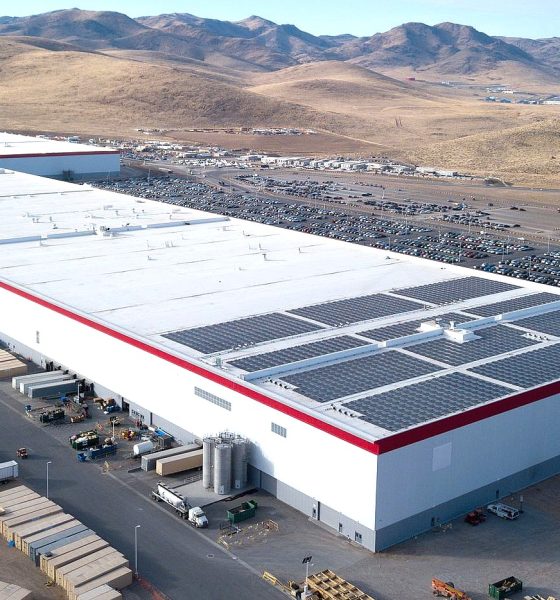

News
New Panasonic CEO talks Tesla battery partnership and 4680 cell production
New Panasonic President and Chief Executive Officer Yuki Kusumi is taking over a leaner version of the 103-year-old Japanese conglomerate. Thanks to the efforts of his predecessor, Kazuhiro Tsuga, who spent almost nine years optimizing Panasonic by letting go of struggling businesses like Plasma TVs, Kusumi could now take the reins of a company that is ready to face the future. This means that Panasonic would be doubling down on its electric car battery business, headlined by its partnership with the world’s premier EV maker, Tesla.
Tesla and Panasonic’s joint operations in Gigafactory Nevada have had their own fair share of challenges, with the automaker putting pressure on its Japanese partner to produce more batteries for its vehicles. Over the years, Panasonic has been pushed frequently by Tesla to produce more batteries, particularly as the demand for the Model 3 hit its pace. With this experience in mind, the new Panasonic CEO noted that moving forward, the Japanese battery maker would be focusing its efforts on raising its output while keeping facility costs low.
“It doesn’t matter how much you want to grow sales or increase profit if you don’t have the capacity to do so. Within our new structure, we’re going to polish this ability, and if you stay tuned, we’ll invest again in building supply capacity,” Kusumi noted.
For now, Panasonic is looking to set up a prototype production line to test 4680 battery cells. The 4680 format was highlighted last year by Tesla during its Battery Day event, and it was framed as a possible catalyst for more affordable electric vehicles. Kusumi stated that if Panasonic could produce the high-quality 4680 cells more efficiently than its rivals, it would be making a “large investment” in the technology. It may also supply the batteries to both Tesla and other automakers.
When asked by Bloomberg about its electric vehicle business, the new Panasonic CEO explained that EV batteries are central to the company’s growth strategy for the coming years. He also noted that Panasonic would work to refine its battery manufacturing techniques to keep itself competitive, despite the emergence of aggressive competitors from South Korea and China.
“(The) battery unit will be one of the central segments of our energy business. We believe it’ll contribute to the environment, and we intend to see it grow further. Competition within the industry is quite fierce, but the battery business is making extremely large facility investments. It’s important to work with manufacturing techniques to efficiently produce batteries in low cost facilities.
“Refining this ability along with further investments will give us the competitiveness to grow further. With the next generation of batteries, we aim to grow by not only producing high-quality batteries but also by making the production procedure more efficient and competitive while improving the competitiveness of our manufacturing. We’ll continue to challenge ourselves and grow,” Kusumi said.
Watch Bloomberg‘s interview with new Panasonic CEO Yuki Kusumi in the video below.
(Quotes from the article courtesy of Bloomberg.)
Do you have anything to share with the Teslarati Team? We’d love to hear from you, email us at tips@teslarati.com.

News
Tesla FSD fleet is nearing 7 billion total miles, including 2.5 billion city miles
As can be seen on Tesla’s official FSD webpage, vehicles equipped with the system have now navigated over 6.99 billion miles.

Tesla’s Full Self-Driving (Supervised) fleet is closing in on almost 7 billion total miles driven, as per data posted by the company on its official FSD webpage.
These figures hint at the massive scale of data fueling Tesla’s rapid FSD improvements, which have been quite notable as of late.
FSD mileage milestones
As can be seen on Tesla’s official FSD webpage, vehicles equipped with the system have now navigated over 6.99 billion miles. Tesla owner and avid FSD tester Whole Mars Catalog also shared a screenshot indicating that from the nearly 7 billion miles traveled by the FSD fleet, more than 2.5 billion miles were driven inside cities.
City miles are particularly valuable for complex urban scenarios like unprotected turns, pedestrian interactions, and traffic lights. This is also the difference-maker for FSD, as only complex solutions, such as Waymo’s self-driving taxis, operate similarly on inner-city streets. And even then, incidents such as the San Francisco blackouts have proven challenging for sensor-rich vehicles like Waymos.
Tesla’s data edge
Tesla has a number of advantages in the autonomous vehicle sector, one of which is the size of its fleet and the number of vehicles training FSD on real-world roads. Tesla’s nearly 7 billion FSD miles then allow the company to roll out updates that make its vehicles behave like they are being driven by experienced drivers, even if they are operating on their own.
So notable are Tesla’s improvements to FSD that NVIDIA Director of Robotics Jim Fan, after experiencing FSD v14, noted that the system is the first AI that passes what he described as a “Physical Turing Test.”
“Despite knowing exactly how robot learning works, I still find it magical watching the steering wheel turn by itself. First it feels surreal, next it becomes routine. Then, like the smartphone, taking it away actively hurts. This is how humanity gets rewired and glued to god-like technologies,” Fan wrote in a post on X.
News
Tesla starts showing how FSD will change lives in Europe
Local officials tested the system on narrow country roads and were impressed by FSD’s smooth, human-like driving, with some calling the service a game-changer for everyday life in areas that are far from urban centers.

Tesla has launched Europe’s first public shuttle service using Full Self-Driving (Supervised) in the rural Eifelkreis Bitburg-Prüm region of Germany, demonstrating how the technology can restore independence and mobility for people who struggle with limited transport options.
Local officials tested the system on narrow country roads and were impressed by FSD’s smooth, human-like driving, with some calling the service a game-changer for everyday life in areas that are far from urban centers.
Officials see real impact on rural residents
Arzfeld Mayor Johannes Kuhl and District Administrator Andreas Kruppert personally tested the Tesla shuttle service. This allowed them to see just how well FSD navigated winding lanes and rural roads confidently. Kruppert said, “Autonomous driving sounds like science fiction to many, but we simply see here that it works totally well in rural regions too.” Kuhl, for his part, also noted that FSD “feels like a very experienced driver.”
The pilot complements the area’s “Citizen Bus” program, which provides on-demand rides for elderly residents who can no longer drive themselves. Tesla Europe shared a video of a demonstration of the service, highlighting how FSD gives people their freedom back, even in places where public transport is not as prevalent.
What the Ministry for Economic Affairs and Transport says
Rhineland-Palatinate’s Minister Daniela Schmitt supported the project, praising the collaboration that made this “first of its kind in Europe” possible. As per the ministry, the rural rollout for the service shows FSD’s potential beyond major cities, and it delivers tangible benefits like grocery runs, doctor visits, and social connections for isolated residents.
“Reliable and flexible mobility is especially vital in rural areas. With the launch of a shuttle service using self-driving vehicles (FSD supervised) by Tesla in the Eifelkreis Bitburg-Prüm, an innovative pilot project is now getting underway that complements local community bus services. It is the first project of its kind in Europe.
“The result is a real gain for rural mobility: greater accessibility, more flexibility and tangible benefits for everyday life. A strong signal for innovation, cooperation and future-oriented mobility beyond urban centers,” the ministry wrote in a LinkedIn post.
News
Tesla China quietly posts Robotaxi-related job listing
Tesla China is currently seeking a Low Voltage Electrical Engineer to work on circuit board design for the company’s autonomous vehicles.

Tesla has posted a new job listing in Shanghai explicitly tied to its Robotaxi program, fueling speculation that the company is preparing to launch its dedicated autonomous ride-hailing service in China.
As noted in the listing, Tesla China is currently seeking a Low Voltage Electrical Engineer to work on circuit board design for the company’s autonomous vehicles.
Robotaxi-specific role
The listing, which was shared on social media platform X by industry watcher @tslaming, suggested that Tesla China is looking to fill the role urgently. The job listing itself specifically mentions that the person hired for the role will be working on the Low Voltage Hardware team, which would design the circuit boards that would serve as the nervous system of the Robotaxi.
Key tasks for the role, as indicated in the job listing, include collaboration with PCB layout, firmware, mechanical, program management, and validation teams, among other responsibilities. The role is based in Shanghai.
China Robotaxi launch
China represents a massive potential market for robotaxis, with its dense urban centers and supportive policies in select cities. Tesla has limited permission to roll out FSD in the country, though despite this, its vehicles have been hailed as among the best in the market when it comes to autonomous features. So far, at least, it appears that China supports Tesla’s FSD and Robotaxi rollout.
This was hinted at in November, when Tesla brought the Cybercab to the 8th China International Import Expo (CIIE) in Shanghai, marking the first time that the autonomous two-seater was brought to the Asia-Pacific region. The vehicle, despite not having a release date in China, received a significant amount of interest among the event’s attendees.








